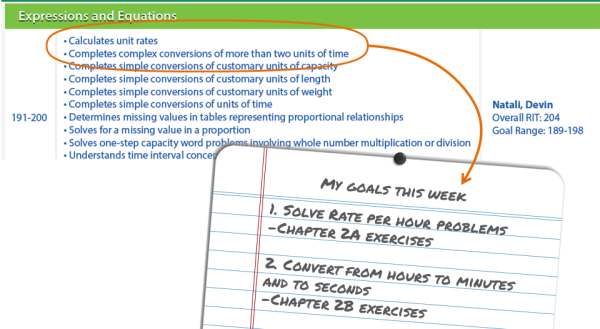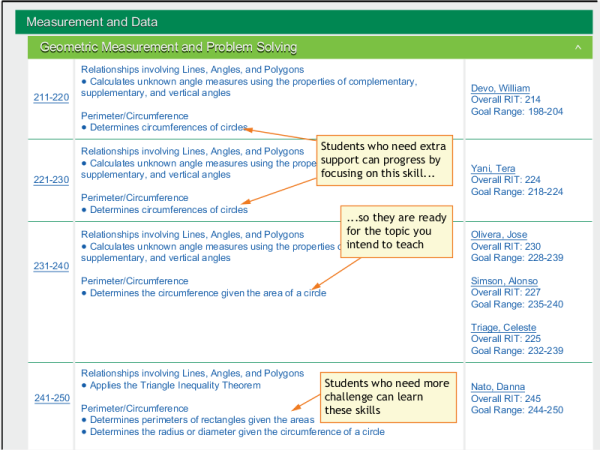
Try the following ideas to leverage the data obtained in the Learning Continuum report.
—Home Page for Learning Continuum—
To help students get involved with their learning, use the Learning Continuum Class View, which shows skills and concepts students are ready to learn.
Example for Goal Setting: The student shown in the following RIT band could set goals around a couple of the learning statements. Later, when ready to set new goals, return the Class View and pick from other learning statements.

While preparing to teach a topic, look for where that topic appears in the Class View. Use search (Ctrl + F) if needed. Once you find the learning statements most similar to the level you intend to teach, compare the lower and higher RIT bands.
Example for Tailoring Lessons: Suppose you intend to teach the topic shown in the following figure. You can tailor your lesson to students in the lower RIT bands by using the learning statement that appears for them. Likewise, in the next higher RIT band, there are learning statements applicable to students ready for more challenge.

Note: You can still differentiate instruction even when a learning statement appears across several RIT bands. Statements covering a broad range of RIT bands indicate a skill or concept with progressive levels of complexity, such as multiplying single digits vs. multiple digits.
As shown in the Class View (see the previous figure), students clustered in the same RIT band or adjacent RIT bands may have similar academic needs. So, when covering that specific sub-goal, you might bring those students together for differentiated instruction.
Together with our state and local standards, use the learning statements to generate ideas for materials and resources. In particular, the Test View enables you to explore the progression of learning for each test subject. If available for your test version, use the Display Options to filter learning statements based on grade-level standard.
© 2010—2014 Northwest Evaluation Association. All rights reserved.
Trademark Statements